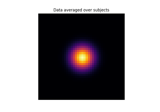mne.channels.read_ch_adjacency#
- mne.channels.read_ch_adjacency(fname, picks=None)[source]#
Parse FieldTrip neighbors
.matfile.More information on these neighbor definitions can be found on the related FieldTrip documentation pages.
- Parameters
- fname
str The file name. See “Notes” below for a list of valid arguments.
- picks
str|list|slice|None Channels to include. Slices and lists of integers will be interpreted as channel indices. In lists, channel type strings (e.g.,
['meg', 'eeg']) will pick channels of those types, channel name strings (e.g.,['MEG0111', 'MEG2623']will pick the given channels. Can also be the string values “all” to pick all channels, or “data” to pick data channels. None (default) will pick all channels. Note that channels ininfo['bads']will be included if their names or indices are explicitly provided. Picks must match the template.
- fname
- Returns
- ch_adjacency
scipy.sparse.csr_matrix, shape (n_channels, n_channels) The adjacency matrix.
- ch_names
list The list of channel names present in adjacency matrix.
- ch_adjacency
Notes
If you don’t know the correct
fnamefor the neighbor definitions, of if the neighbor definition you need is not shipped by MNE-Python, you may usefind_ch_adjacency()to compute the adjacency matrix based on your 2D sensor locations.Note that depending on your use case, you may need to additionally use
mne.stats.combine_adjacency()to prepare a final “adjacency” to pass to the eventual function.Valid
fnamearguments are:fname
biosemi16
biosemi32
biosemi64
bti148
bti248
bti248grad
ctf64
ctf151
ctf275
easycap32ch-avg
easycap64ch-avg
easycap128ch-avg
easycapM1
easycapM11
easycapM14
easycapM15
KIT-157
KIT-208
KIT-NYU-2019
KIT-UMD-1
KIT-UMD-2
KIT-UMD-3
KIT-UMD-4
neuromag306mag
neuromag306planar
